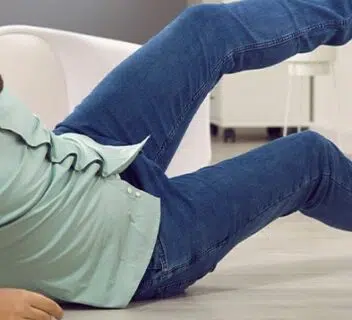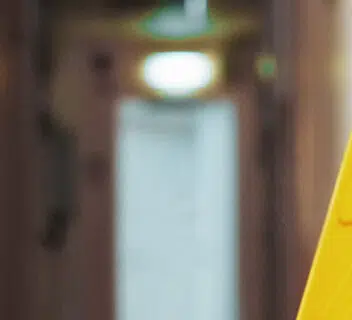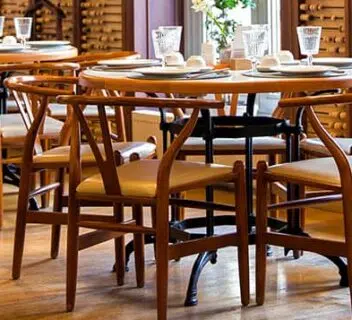Top Causes of Slip and Fall Accidents and How to Prevent Them
Slip and fall accidents often result from wet surfaces, uneven flooring, poor lighting, and obstacles. Understanding the causes of slip and fall accidents is crucial for prevention. This article delves into these common factors and offers practical tips to reduce risks.
Key Takeaways
- Slip and fall accidents are primarily caused by environmental hazards such as wet surfaces, uneven flooring, poor lighting, and obstacles in walkways.
- Human factors like distractions, improper footwear, and failure to follow safety protocols significantly contribute to the occurrence of slip and fall incidents.
- Effective prevention measures include regular maintenance, adequate lighting, and training programs to educate individuals about safety and hazard recognition.
Leading Causes of Slip and Fall Accidents
Slip and fall accidents often stem from a combination of hazardous environmental conditions and human factors, with a common cause being the leading cause of some of the most common causes, including:
- Wet surfaces
- Uneven flooring
- Poor lighting
- Obstacles in walkways
Mitigating these hazards can significantly reduce accidents and enhance safety.
Wet and Slippery Surfaces
Wet and slippery surfaces are a frequent cause of slip and fall accidents. Hazards like spilled liquids in supermarket aisles, leaks in restaurant kitchens, and rain-soaked entryways create dangerous conditions. Additionally, weather elements such as ice, snow, and rain further contribute to the risk of falls.
Regular floor inspections and maintenance help in identifying and rectifying potential hazards. Promptly cleaning up and marking wet floors with warning signs can prevent many accidents. Clean and dry surfaces are crucial, as more than half of slip and fall cases involve wet and uneven conditions.
It’s not just about cleaning up spills; it’s also about preventing them. Properly maintaining plumbing to avoid leaks and ensuring that drainage systems are effective can help keep floors dry. Proactively addressing these issues can significantly lower the risk of slip and fall accidents.
Uneven or Damaged Flooring
Uneven or damaged flooring is another frequent cause of slip and fall accidents. Issues like:
- potholes
- uneven sidewalks
- loose floorboards
- cracked sidewalks
- cracked tiles pose tripping hazards that can result in serious injuries. Additionally, uneven surfaces can contribute to these hazards.
Regular inspections help identify and address these issues before they cause accidents. Property owners should maintain even floors and promptly repair damages, such as fixing loose tiles or replacing worn-out carpets, to prevent accidents.
Even minor issues like loose mats or poorly maintained carpets can increase the risk of slips and falls on slippery floors. Securing all flooring surfaces is key to creating a safe environment.
Poor Lighting Conditions
Poor lighting is a significant factor contributing to slip and fall accidents. Proper illumination is essential in high-risk areas such as staircases, hallways, and entryways. Insufficient lighting makes it difficult to see potential hazards, significantly increasing the likelihood of accidents.
Well-lit areas help individuals see and avoid potential tripping hazards. Adequate lighting in stairwells and walkways is particularly important, as these areas frequently witness slip and fall incidents.
Property owners should regularly check and maintain lighting fixtures to ensure they are functioning correctly. Implementing motion-activated lights can also enhance safety, especially in areas that are frequently used at night.
Obstacles and Debris
Obstacles and debris in walkways are frequent contributors to trip and fall accidents. Clutter, stray cords, and exposed wiring create tripping hazards that can lead to falls.
Keeping walkways clear of obstacles is crucial for preventing slip and fall accidents. This includes ensuring that extension cords are not left in walkways and that any clutter is promptly removed.
Regular inspections and maintaining a clean environment can significantly reduce accident risks. Keeping walkways clear of debris creates a safer environment for everyone.
Human Factors Contributing to Slip and Fall Accidents
Human behavior and choices significantly contribute to slip and fall accidents. Distractions, improper footwear, and neglecting safety protocols increase the likelihood of falls. Recognizing these factors helps individuals make safer decisions and reduce accident risks.
Distraction and Inattention
Distractions and inattention are major contributors to slip and fall accidents. Using smartphones or engaging in other distractions while walking can prevent individuals from noticing potential hazards. Staying attentive and aware of one’s surroundings is crucial in preventing accidents.
Recognizing the effects of distractions helps individuals stay cautious and reduce fall risks. Paying attention to where one is walking often prevents slip and fall accidents. Avoiding distractions like texting or looking at your phone while moving makes a significant difference.
Improper Footwear
Wearing inadequate footwear can significantly increase the risk of slip and fall accidents. Footwear lacking proper grip and support can lead to slips, especially on slick surfaces. Worn-out shoes lose traction, making them a hazard.
Selecting the right footwear prevents accidents. Shoes with good grip and support help maintain balance and avoid slipping, especially in environments with wet or slippery surfaces.
Attention to footwear condition and type reduces slip and fall risks. Regularly replacing worn-out shoes and selecting suitable footwear for the environment makes a significant difference.
Failure to Follow Safety Protocols
Failure to follow safety protocols is a significant human factor contributing to slip and fall accidents. Training staff on safety protocols can significantly enhance awareness and reduce slip and fall incidents.
Training programs on identifying and managing slip and fall risks empower employees to maintain a safer environment. Neglecting safety measures and warnings significantly increases the risk of accidents, as highlighted by the National Floor Safety Institute.
Awareness and adherence to safety protocols are crucial in preventing accidents. Regular training sessions and safety reminders help reduce slip and fall incidents.
Common Locations for Slip and Fall Accidents
Slip and fall accidents can happen in many different settings, including other locations such as workplaces, public spaces, and private residences. Recognizing common locations for slip and falls aids in identifying and mitigating risks when an accident occurs.
Workplaces
Workplaces, particularly in industries like construction and maintenance, are high-risk environments for slip and fall accidents. Inadequate training and neglecting established safety measures often lead to accidents.
Workplace safety through proper training and adherence to protocols reduces slip and fall incidents. Regular inspections and maintenance identify and address potential hazards before accidents occur.
Prioritizing occupational safety and offering proper training helps employers create a safer work environment and reduce slip and fall risks.
Public Spaces
Public spaces like grocery stores, parking lots, and sidewalks are frequent locations for slip and fall incidents. Owner’s negligence is a key factor in these accidents, and proving negligence is essential for compensation claims.
Recognizing owner negligence in public spaces advocates for safer environments and prevents accidents. Regular maintenance and prompt hazard mitigation significantly reduce slip and fall risks in public areas.
Well-maintained and hazard-free public spaces create safer environments for everyone.
Private Residences
Common causes of falls in private residences include:
- Loose rugs
- Extension cords
- Clutter
- Poor maintenance
- Improper construction
These hazards create a tripping hazard that can lead to accidents.
Homeowners should regularly inspect and maintain their property to eliminate hazards. Proper construction and maintenance significantly reduce slip and fall risks in a private home.
Addressing these potential hazards helps homeowners create a safer living environment and prevent slip and fall accidents.
Injuries Resulting from Slip and Fall Accidents
Slip and fall accidents can result in a range of injuries, from minor bruises to serious injury, life-threatening conditions. Recognizing common injuries helps in understanding fall injuries and seeking appropriate medical attention for significant injuries. A slip and fall accident can lead to various outcomes that require careful consideration.
Fractures and Broken Bones
Fractures are the most common injury resulting from slip and fall incidents. Hip fractures are particularly prevalent, with 95% of them caused by falls. The most commonly broken bones in slip and fall accidents are:
- Hip bones
- Arm bones
- Spinal bones. These injuries can lead to significant physical and financial consequences, requiring extensive medical treatment and rehabilitation.
Recognizing the severity of fractures and broken bones prompts timely seeking medical attention, reducing the impact of these severe injuries.
Soft Tissue Damage
Soft tissue damage is another common injury resulting from slip and fall accidents. Conditions such as bruising, sprains, and bleeding can occur when individuals fall or trip over obstacles.
Household falls often result in soft tissue injuries, especially when tripping over extension cords or clutter. These sustained injuries might not seem severe initially, but they can lead to long-term pain and complications if not treated properly.
Recognizing and treating soft tissue damage prevents further complications. Timely medical attention manages pain and promotes healing, reducing long-term issues.
Traumatic Brain Injuries
Traumatic brain injuries (TBIs) are among the most serious consequences of slip and fall accidents. Head injuries from falls can lead to significant mental health issues, including anxiety and post-traumatic stress.
TBIs can have profound effects on an individual’s life, impacting their cognitive abilities, emotional stability, and overall quality of life. These injuries often require extensive medical treatment and rehabilitation, leading to substantial financial burdens.
Recognizing the severity of traumatic brain injuries and seeking immediate medical attention can mitigate long-term impacts. Proper diagnosis and treatment are essential for managing TBIs and promoting recovery.
Legal Recourse for Slip and Fall Victims
Victims of slip and fall accidents have legal options to seek compensation for their injuries. Knowing how to prove negligence, the types of compensation available, and the importance of legal representation helps victims navigate their legal rights effectively. Contact 1-800-THE-LAW2 today for a free consultation with a slip and fall lawyer in our network.
Proving Negligence
Proving negligence is critical in a slip and fall claim. A property owner must keep their premises reasonably safe. Negligence is established when they fail to act on known dangers, like not clearing ice from a sidewalk.
Proving someone’s negligence requires demonstrating that the property owner’s (or property operator’s) irresponsibility directly caused the injuries, making the property owner/operator liable as the responsible party. This involves gathering evidence like an incident report, witness statements, and maintenance records.
Defendants may argue the hazard was “open and obvious” or that they aren’t accountable for hazards occurring after their last inspection. Overcoming these defenses requires thorough documentation and legal expertise.
Types of Compensation
Slip and fall victims and accident victims may seek compensation for medical expenses, lost wages, emotional distress, loss of earning capacity, loss of property, and pain and suffering.
Claim compensation involves documenting all related expenses and losses to present a comprehensive case. This complex process requires attention to detail and legal guidance to ensure all potential damages are accounted for.
Importance of Legal Representation
Consulting a personal injury lawyer through the 1-800-THE-LAW2 network is an effective step to pushing forward slip and fall claims. Legal representation helps victims understand their rights, gather evidence, and build a strong case.
Slip and fall cases often involve complex laws and regulations, making them challenging without professional assistance from a slip and fall lawyer. Lawyers address issues of negligence, liability, and insurance procedures, increasing the chances of securing adequate compensation in a fall case.
A free case review from an experienced lawyer provides valuable insights into legal options and helps victims make informed decisions. Legal representation ensures victims have the support they need to pursue their claims effectively. Contact 1-800-THE-LAW2 today.
Preventative Measures for Slip and Fall Accidents
Preventing slip and fall accidents requires a proactive approach, including proper maintenance, adequate lighting, and education. Implementing these measures can create safer environments and reduce the risk of accidents.
Ensuring Proper Maintenance
Regular inspections of floors, walkways, and work areas identify and rectify potential hazards. Proper maintenance prevents accidents by ensuring surfaces are even, clean, and free of debris.
Proper training on occupational safety and maintenance protocols is crucial. Ensuring all staff adhere to safety standards significantly reduces slip and fall risks.
Promptly and thoroughly addressing maintenance issues prevents hazards from becoming accidents. Maintaining a clean and safe environment protects everyone from potential injuries.
Implementing Adequate Lighting
Adequate lighting is crucial in preventing slip and fall accidents by enhancing visibility in all areas. Poor lighting makes it difficult to see hazards, increasing the risk of falls.
Stairwells and walkways should have sufficient lighting to reduce fall risks. Motion-activated lights and well-lit areas at night greatly improve safety.
Regularly checking and maintaining lighting fixtures ensures they function correctly and provide adequate illumination. Proper lighting creates safer environments and reduces slip and fall risks.
Educating Employees and Occupants
Adequate training on safety measures reduces slip and fall accidents. Key benefits of training programs include:
- Empowering individuals to recognize and report hazards effectively
- Educating employees about risks
- Promoting safer behaviors and environments. Many incidents arise from a lack of awareness regarding safety standards.
Regular safety training sessions and reminders reinforce the importance of adhering to safety protocols. Educating employees and occupants about potential hazards and prevention measures is key to reducing slip and fall incidents.
Summary
Slip and fall accidents are a significant concern that can lead to serious injuries and substantial financial burdens. Understanding the common causes, including wet and slippery surfaces, uneven flooring, poor lighting, and human factors, is crucial in preventing these accidents.
By implementing preventative measures such as proper maintenance, adequate lighting, and safety education, property owners and individuals can create safer environments. Legal recourse is available for victims, and consulting a personal injury lawyer can help navigate the complexities of slip and fall claims. Prioritizing safety and awareness can significantly reduce the risk of slip and fall accidents, protecting both individuals and property owners.
Frequently Asked Questions
The most common causes of slip and fall accidents are wet surfaces, uneven or damaged flooring, inadequate lighting, and obstacles in walkways. Addressing these hazards can significantly reduce the risk of such incidents.
To prove negligence in a slip and fall case, you must demonstrate that the property owner did not uphold their duty to maintain a safe environment, which directly resulted in your injury. This can be established through evidence such as incident reports, witness statements, and maintenance records.
After a slip and fall accident, you can seek compensation for medical expenses, lost income, emotional distress, pain and suffering, and any property damage. These factors collectively help address the financial and emotional impact of the incident.
Legal representation is essential in slip and fall cases due to the intricate laws and regulations involved. An experienced personal injury lawyer will effectively gather evidence and construct a compelling case, ensuring your rights are protected.
Implementing regular maintenance and inspections, ensuring adequate lighting, keeping walkways clear, and educating individuals about safety measures can significantly reduce the risk of slip and fall accidents. Prioritizing these actions fosters a safer environment for everyone.




